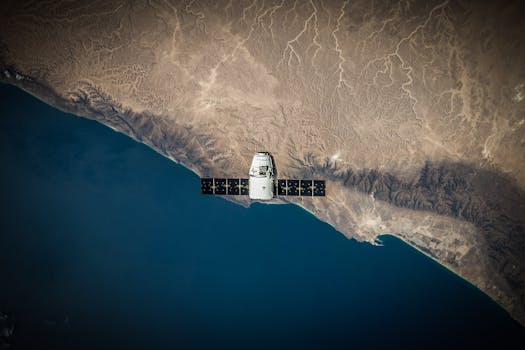Harnessing the Skies: New Technologies Transforming Satellite Communications
Satellite communications are undergoing a significant transformation with the advent of new technologies, enabling faster and more efficient data transfer. The demand for satellite communications has increased exponentially in recent years, driven by the growing need for global connectivity, particularly in remote and underserved areas. Harnessing the skies, new technologies are being developed to enhance the capabilities of satellite communications, including advanced satellite constellations, high-throughput satellites, and innovative propulsion systems.
At the forefront of this transformation is the development of low-Earth orbit (LEO) satellite constellations. These constellations consist of a large number of small satellites that work together to provide global coverage and high-speed connectivity. Companies such as SpaceX, OneWeb, and Amazon’s Kuiper Systems are leading the charge in developing LEO satellite constellations, with the goal of providing fast and affordable internet access to underserved communities around the world. The use of LEO satellites enables faster data transfer and lower latency, making them ideal for applications such as real-time video streaming and online gaming.
Advances in Satellite Technology

In addition to LEO satellite constellations, advances in satellite technology are also driving the transformation of satellite communications. High-throughput satellites (HTS) are being developed to provide faster and more efficient data transfer. HTS use a combination of advanced technologies, including spot beams and frequency reuse, to increase the amount of data that can be transferred through a single satellite. This enables the provision of high-speed internet access, as well as other bandwidth-intensive applications such as video streaming and virtual reality.
Another key area of innovation is in the development of advanced propulsion systems for satellites. Traditional propulsion systems rely on chemical-based fuels, which can be heavy and inefficient. New propulsion systems, such as electric propulsion and advanced ion engines, are being developed to provide more efficient and longer-lasting propulsion. These systems enable satellites to maintain their position and altitude for longer periods, reducing the need for frequent reboosts and increasing their overall lifespan.
Applications of Satellite Communications

The transformation of satellite communications is enabling a wide range of applications, from remote connectivity and IoT devices to Earth observation and space exploration. Satellite communications are being used to provide connectivity to remote and underserved areas, enabling access to vital services such as healthcare, education, and financial inclusion. The use of satellite communications is also enabling the deployment of IoT devices in remote areas, such as smart meters and environmental monitoring systems.
Satellite communications are also playing a critical role in Earth observation and space exploration. Satellites are being used to monitor the environment, track weather patterns, and predict natural disasters. They are also being used to explore space, including the study of distant planets and the search for signs of life beyond Earth. The use of satellite communications is enabling the transmission of large amounts of data from space, enabling scientists to conduct complex research and analysis.
Conclusion

In conclusion, the transformation of satellite communications is being driven by the advent of new technologies, including LEO satellite constellations, high-throughput satellites, and advanced propulsion systems. These technologies are enabling faster and more efficient data transfer, as well as a wide range of applications, from remote connectivity and IoT devices to Earth observation and space exploration. As the demand for satellite communications continues to grow, it is likely that we will see even more innovative technologies emerge, further harnessing the skies and enabling global connectivity.
See more:
